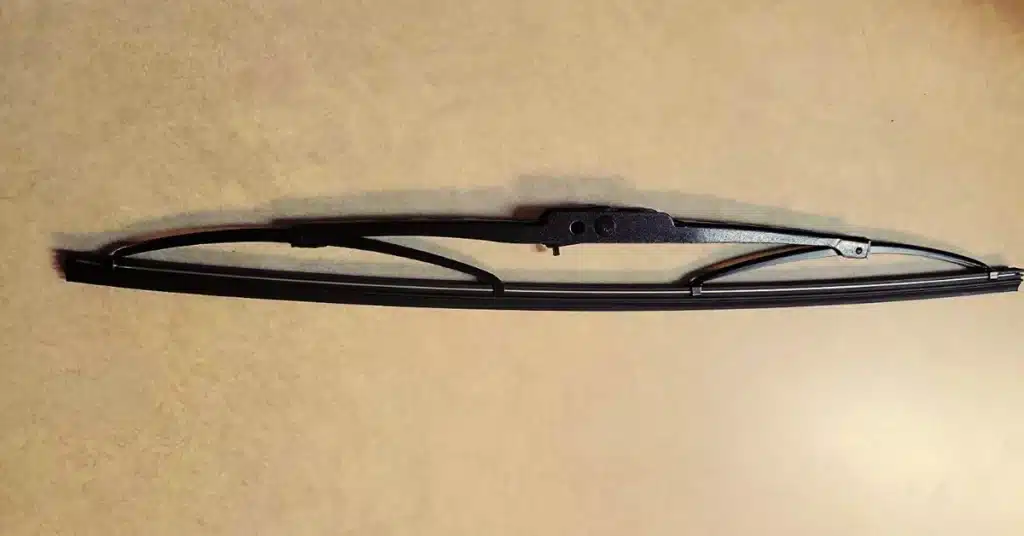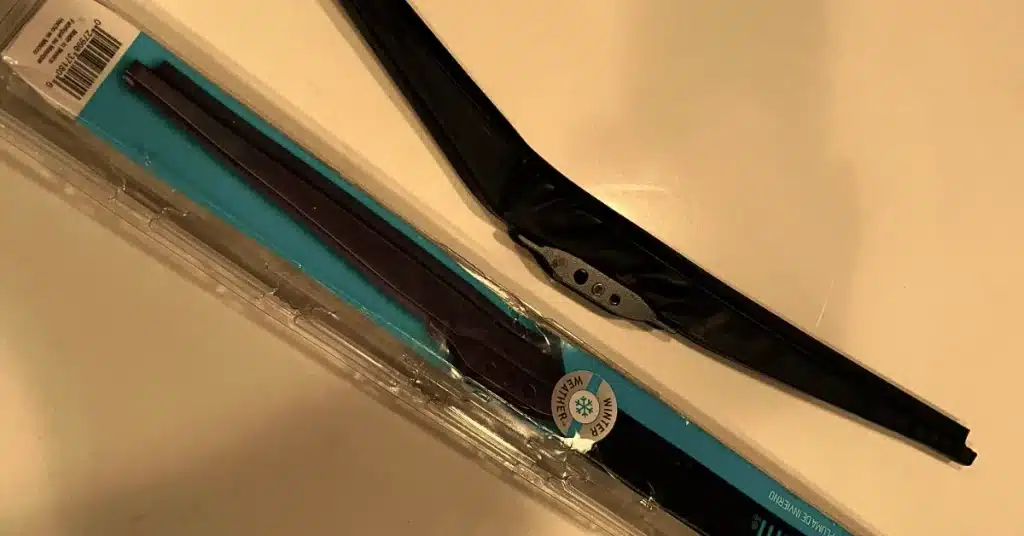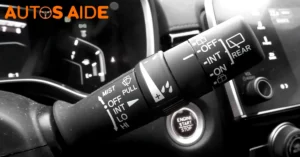Once the temperature drops and the first snowflake lands on your car windshield, the discussion around winter wipers vs. regular wipers gains momentum.
This article aims to highlight the differences and their uses and give you a comprehensive idea to decide between them.
The Regular Wipers
Regular wipers, also known as summer wipers, are the ones you’d typically see on most cars.
They are designed to perform well in average weather conditions. Here’s a deeper look into their structure and use.

Anatomy of Regular Wipers
The most important part of any wiper is the blade. The blade is a thin, bendable strip of rubber for regular wipers. It’s attached to a strong metal frame.
This strip can bend to match the shape of the windshield. This flexibility helps it clean the windshield properly every time it moves across.
When to Use Regular Wipers
Regular wipers are mostly used in mild weather. They’re made to work their best when it’s raining or the windshield has water on it for any reason.
However, they don’t work as well in heavy snow or ice. In these conditions, the performance of regular wipers can drop quite a bit.
This is why winter wipers are recommended when the weather gets cold.
Read More: Beam vs. Conventional Wiper Blades
The Winter Wipers
Winter wipers, often called snow wipers, are the best choice for drivers in cold, snowy areas. They are built to handle tough weather and give clear vision to drivers, which is very important during winter.
Design and Functionality of Winter Wipers
Winter wipers are very different from the normal wipers you see every day. They have a strong, tough design meant to deal with freezing conditions.
Instead of the open metal parts you see in regular wipers, winter wipers have a rubber cover. This isn’t just to make them look good; it has a very important job of stopping the wiper blade from getting icy or freezing, which could stop the wiper from working.
The wiper blade is made from man-made materials. These materials are carefully picked because they can handle cold temperatures.
The rubber used in regular wipers can become hard and break in low temperatures, which can stop it from cleaning properly.
But man-made materials don’t have this problem and can work perfectly even when it’s very cold, making sure they last longer in freezing conditions.

The Right Time to Switch to Winter Wipers
Knowing when to start using winter wipers can really help your driving.
Winter wipers are best when the weather gets cold and starts to freeze. They are made to deal with snow and ice, which could be hard for regular wipers.
It’s a good idea to start using winter wipers when the temperature goes below freezing. This helps you see properly when driving in winter and reduces the chance of accidents.
Making this change early can keep your wipers in good shape and keep you safe on the road.
Winter Wipers vs. Regular Wipers: A Detailed Comparison
Although winter and regular wipers both have the main job of giving drivers a clear view, they are actually very different in many ways.
They have big differences in design, how they work, and how suitable they are for different weather conditions.
Design: Regular wipers have a light design with open metal parts, which is fine in normal weather but can cause problems when it’s freezing.
Winter wipers, on the other hand, have a tough design. Their rubber cover stops ice from building up, letting them work well in winter weather.
Functionality: Regular wipers are great in rain and normal weather conditions.
They are made to work very well when dealing with rainwater.
Winter wipers, however, are the best for tough conditions. They can handle heavy snow and ice, giving clear vision in situations where regular wipers might struggle.
Durability: Winter wipers are usually stronger and better at handling tough winter conditions than regular wipers.
While regular wipers work fine in milder weather, they wear out faster when faced with freezing temperatures and heavy snow.
Buying winter wipers could save you money in the long run if you live in an area that often has harsh winter weather.
Andy’s Opinion
In the battle of winter wipers vs. regular wipers, it’s clear that each type has its season.
Regular wipers are suitable for mild weather, while winter wipers take the lead during cold, snowy conditions.
Make an informed choice based on your climate, and stay safe on the roads!
Do I really need winter wiper blades?
The need for winter wiper blades depends on your local weather. Winter wipers are a must if your area experiences heavy snow and freezing temperatures.
They are designed to handle such harsh conditions, ensuring clear driving visibility. However, regular wipers should suffice if you live in a milder climate.
Do you need special windshield wipers for snow?
Yes, if you frequently drive in snowy conditions, it’s highly recommended to use special windshield wipers designed for snow. Known as winter wipers, they are constructed to handle the demands of snowy weather, preventing ice buildup and maintaining flexibility in cold temperatures.
This ensures better visibility and a safer driving experience during snowy weather.





